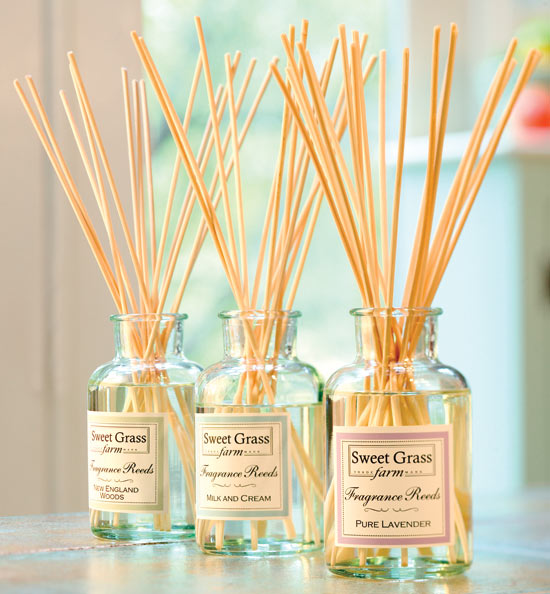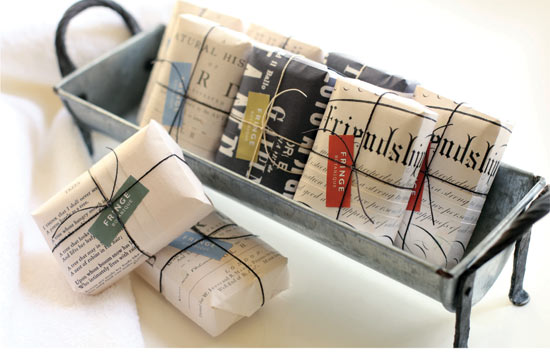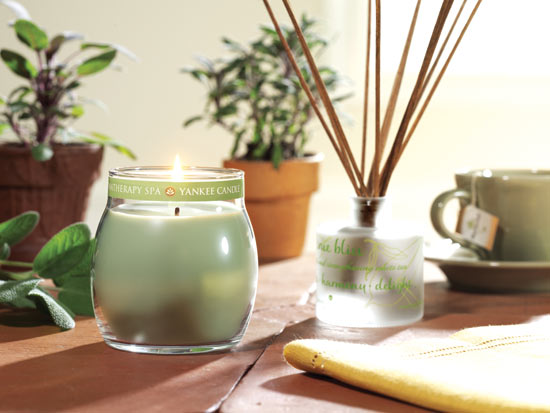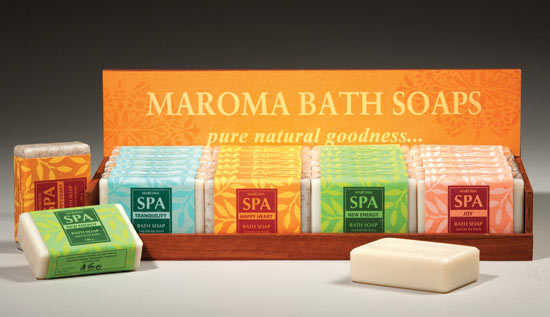The Sweet Smell of Success
A wide range of products is increasingly being included under the aromatherapy umbrella. Find out which ones qualify and what factors are driving demand.
The scent of a rose. A spritz from an aerosol spray. A soy candle made with essential oils. The idea of scents impacting our moods and even affecting our health has become increasingly popular over the past several years, with “aromatherapy” becoming a term that is widely known by consumers across many demographics.
Even if the term is widely used, it is one that is not widely understood, say those in the industry. In fact, says Walter Sharp, the general manager of Maroma USA in Miami, aromatherapy has become a term that is used too broadly, and often incorrectly. “Room fragrances sold in grocery stores claim to be aromatherapy products, but they’re not,” he stresses. “Even some laundry detergents are making semi-aromatherapy claims,” he says. “They’re all synthetic fragrances.” It is the natural, raw products that truly represent aromatherapy, he says. “All of our fragrances are made with natural essential oils. The natural element is the raw element.”
What is aromatherapy?
According to MedicineNet.com, aromatherapy is “a form of alternative and complementary medicine based on the use of very concentrated essential oils from the flowers, leaves, bark, branches, rind or roots of plants with purported healing properties.”
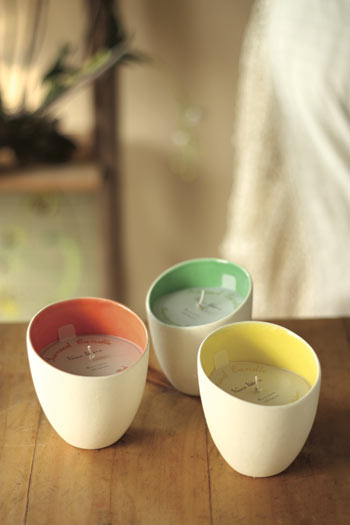 Generally, says the site, these oils are mixed with a carrier—usually soybean or almond oil—or diluted with alcohol or water—and rubbed on the skin, sprayed in the air, inhaled or applied as a compress. Those who “practice” aromatherapy claim that the scent of these oils can stimulate the brain in various ways (e.g. lavender has effects that promote a sense of well-being) and that if the oils are absorbed through the skin into the bloodstream they can affect the entire body and even promote healing.
Generally, says the site, these oils are mixed with a carrier—usually soybean or almond oil—or diluted with alcohol or water—and rubbed on the skin, sprayed in the air, inhaled or applied as a compress. Those who “practice” aromatherapy claim that the scent of these oils can stimulate the brain in various ways (e.g. lavender has effects that promote a sense of well-being) and that if the oils are absorbed through the skin into the bloodstream they can affect the entire body and even promote healing.
The use of natural versus synthetic oils is key to the authenticity—and value—of aromatherapy products. Consumers are becoming more knowledgeable about the differences and more discerning in their purchases, says Rachel Sutherland, with Greenleaf, Inc. in Spartanburg, SC. The company started out as a greenhouse and has maintained a focus on plant-based scents in its candles and other products. The challenge, admits Sutherland, is that the industry doesn’t yet have a standard for how it describes or labels aromatherapy products.
Growing demand
Despite the lack of standards, aromatherapy products are catching on among consumers who are increasingly concerned about what they’re putting on as well as in their bodies.
 Valerie Bennis is a certified aromatherapist in New York City and the creator of the Essence of Vali line. “The whole holistic health movement has been driven by the consumer,” says Bennis. “They’ve grown tired of standard medical care and they’re looking for alternatives.”
Valerie Bennis is a certified aromatherapist in New York City and the creator of the Essence of Vali line. “The whole holistic health movement has been driven by the consumer,” says Bennis. “They’ve grown tired of standard medical care and they’re looking for alternatives.”
And the facts back her up. According to SPINS, a Schaumburg, IL based market research firm, sales of natural aromatherapy and body oils grew 10 percent in natural and conventional channels from April 2009 to April 2010. Gudrun Rubbo is a certified aromatherapist whose education extends from Vienna, Austria, where she was born and raised, to California, where she is currently based and where she operates Gudi’s Aromatherapy. She likens the move to aromatherapy as one similar to the trend to eat more natural foods.
That’s good news for those that produce and sell aromatherapy products. Ella Rich owns an organic aromatherapy and flower essence company in Seattle—Ellaflor. Rich combines flower essences with essential oils to create unique products. The primary scent in her line is a Peruvian oil—palo santo—a wood-based scent.
“I think people are becoming more sensitive. They’re looking for a way to feel grounded and to feel calm,” says Rich. “My tagline for my company is ‘put a little ohm in your home.’ That refers not only to your physical space, but to your body too—your ultimate home.”
Back to nature
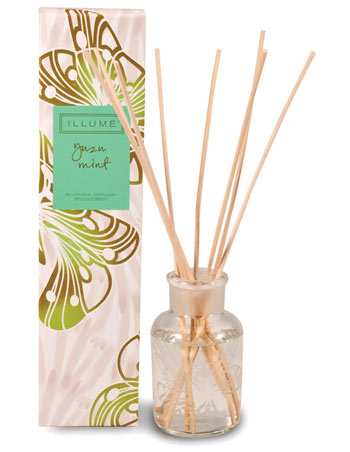 A growing interest in buying local and getting to the roots of where products originate is also fueling demand, says Rich. Sutherland agrees. “Our world is becoming so over-saturated with technology and information so people are looking for something to take a time out.” And, they’re also actively seeking ways to feel better—ways that don’t involve traditional medicine.
A growing interest in buying local and getting to the roots of where products originate is also fueling demand, says Rich. Sutherland agrees. “Our world is becoming so over-saturated with technology and information so people are looking for something to take a time out.” And, they’re also actively seeking ways to feel better—ways that don’t involve traditional medicine.
“Aromatherapy” is an evocative word that immediately conveys the concept of aroma being used therapeutically. Aromatherapy has become very popular as part of the wellness movement, says Sutherland.
There are four major groups of fragrance, Sutherland points out: sweet, clean, green and woodsy. Different fragrances also have different effects on mood, she says. “Lavender and chamomile are soothing and calming. Florals are calming. Anything with citrus is going to be more invigorating. Anything that is powdery like vanilla tends to be more comforting.”
The combination of sensory impact, natural versus synthetic elements, a back-to-nature appeal and an alternative to traditional health care have all served to fuel the demand for aromatherapy-based products. Still, selling these products can be challenging, in large part due to the wide array of options available and the lack of knowledge among both consumers and retailers. Fortunately, the products lend themselves to an experiential approach, which can be very impactful.
Sniff test
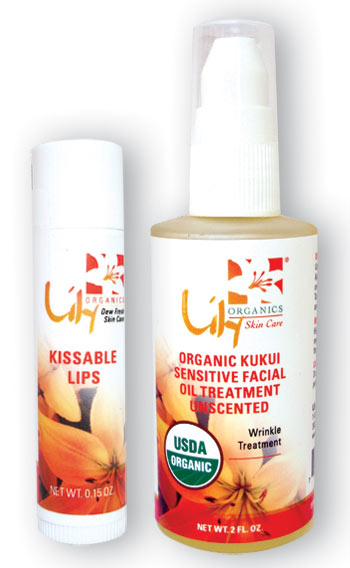 Lily Morgan is the “head farm hand” with Lily Organics, in Henderson, CO. Morgan has been handcrafting fresh batches of her skincare products since 1986. “All of our products use essential oils,” says Morgan—primarily ylang ylang, tea tree and eucalyptus.
Lily Morgan is the “head farm hand” with Lily Organics, in Henderson, CO. Morgan has been handcrafting fresh batches of her skincare products since 1986. “All of our products use essential oils,” says Morgan—primarily ylang ylang, tea tree and eucalyptus.
“The first thing a woman does when she opens a skin care product is smell it,” says Morgan. “One hundred out of one hundred times if you hand a woman a product, she’ll open it and she’ll smell it—it’s just instinctual.”
That points to a natural first step in selling aromatherapy products. Make them available for smelling. “Testers—testers—testers,” says Morgan. “If we can get you to put that cream on your hand or spray that mist on your face, then we can get you to buy it because experience is what sells.”
Katie Hess is an organic alchemist with Lotus Wei in Phoenix. Because the experience is so important with aromatherapy products, Hess suggests stocking up on paper strips that can be dipped into oils to give people an opportunity to sample the scents.
Education and relevance
But experience must come with relevance says Dan Brunt, co-founder, along with Chris Genualdi. of Aromago, a Denver-based company. Aromago blends essential natural oils and offers them in convenient portable dispensers. “Currently our two blends—Revive and Relax—are sold in health food shops, alternative health experts offices and online at our website, says Brunt. Revive is a mix of peppermint and eucalyptus essentials oils and Relax is a combination of lavender essential oils and vanilla. The product is unique, says Brunt, because of its two-sided dispenser. “One side provides the user with a quick whiff of his or her favorite essential oil. The other side dispenses the oil so that it can be placed under the nose, on the wrist, or on the temples for longer-lasting refreshment.”
 People are really looking for a purpose for the products they buy, says Brunt. “They’ll look at me and say ‘what do I use it for?'” So, he says, he’ll point out that Revive can be a great cold remedy, or Relax can be used at the end of a long day. “You have to catch their attention. They need to see the purpose and how it will fit into their lives,” he says. That requires a thorough understanding of the product by those selling it.
People are really looking for a purpose for the products they buy, says Brunt. “They’ll look at me and say ‘what do I use it for?'” So, he says, he’ll point out that Revive can be a great cold remedy, or Relax can be used at the end of a long day. “You have to catch their attention. They need to see the purpose and how it will fit into their lives,” he says. That requires a thorough understanding of the product by those selling it.
Bennis notes that retailers and their staff must “believe in” the products. And it definitely helps if they’ve actually used them. “We’ll always send samples and, if we do training, we send extra bottles so that the people who are getting the training can then take the bottles home with them,” she says. “There’s nothing like people experiencing the power of aromatherapy themselves.”
Unlike many others, aromatherapy products require some explanation. “If a product is just sitting on a shelf in a store it really doesn’t have an advocate,” Rich says. “I’m really big into educating—just kind of helping people get more intuitive and more in touch with the natural world.” Rich does this through workshops that she says also help to build trust with customers. She says it can also be fun and instructive to encourage people to experiment with the scents, to make their own blends and products.
“I always suggest to people that they can really start to have fun by investing in a couple of different essential oils that they like and making spritzes for gifts or mixing a few drops of essential oil in a jar with sugar—which can serve as an exfoliator—to create an aromatic, natural exfoliator for the shower.”
Retailers that have newsletters—either hard copy or online—can include tips and general information in the newsletters, Hess notes. “Things like: ‘during the fall cold and flu season, put some lavender in your pillows.'”
“Having parties or weekly happy hours where customers come in and actually experience the products,” can be a great way to generate excitement and interest, she says. These can provide opportunities “to show people how easy it can be to incorporate aromatherapy into their daily lives,” Hess adds.
Lin Grensing-Pophal is a freelance business journalist in Chippewa Falls, WI. She writes about marketing and business management issues for national and trade publications and is the author of Marketing With the End in Mind (IABC, 2005).
Mouse over images below to view.
